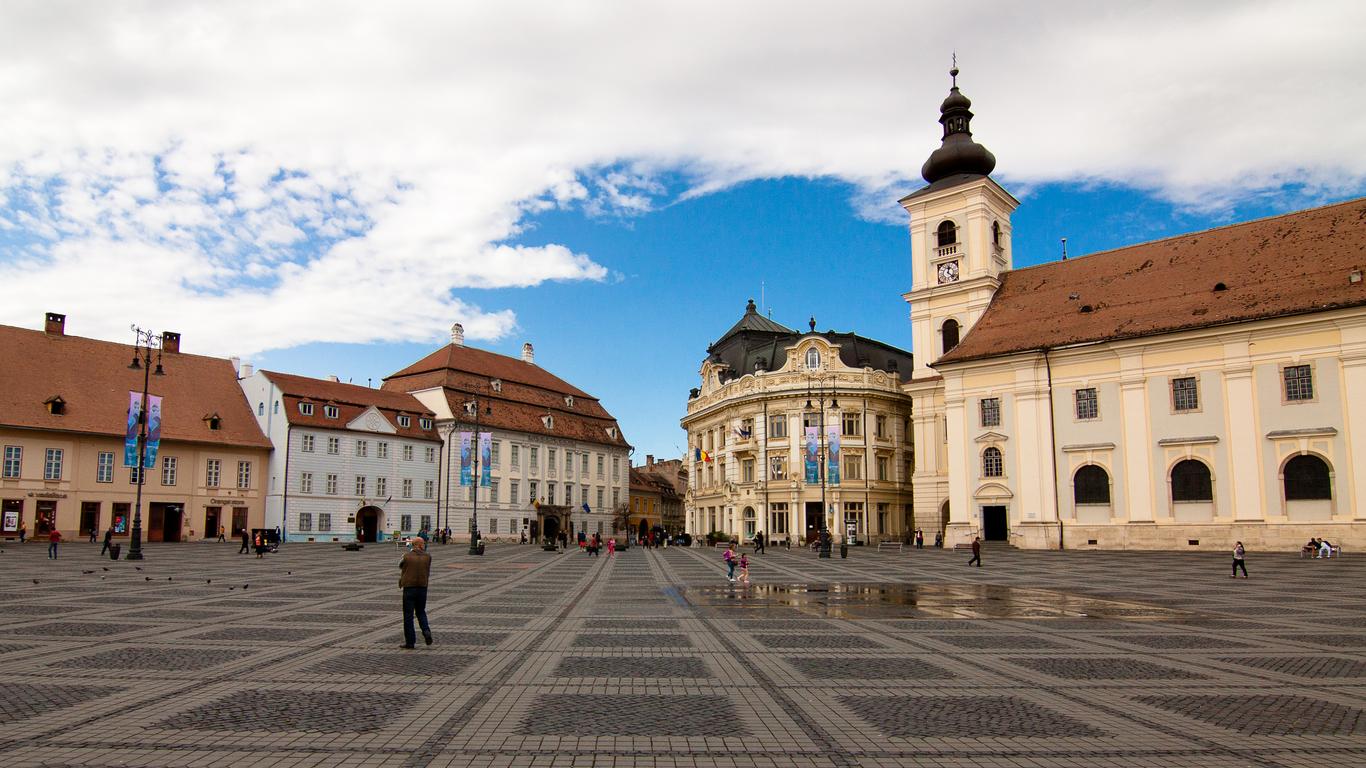
Romania travel guide
Romania Tourism | Romania Guide
You're Going to Love Romania
Visit Romania to tour fantasy castles, experience lush green mountains and hills, and explore a vibrant and cultural capital city.

What to do in Romania
1. Visit Bran Castle
Mostly known as Count Dracula's home, visit the Bran Castle to find out if the myth lives up to the hype and see one of the most beautiful buildings in Romania.
2. Tour the Palace of Parliament
Still not quite finished, the Palace of Parliament in Bucharest is one of the most popular landmarks in the country's capital city.
3. Marvel at Colorful Frescoes
The Bucovina Monasteries are worldwide famous for their incredible and well-maintained frescoes.
4. Explore Transylvania
More famous for the vampire and Dracula folklore than anything else, Transylvania is also home to spectacular landscapes and UNESCO World Heritage Sites.
5. Attend Top Cultural Events
Experience Romania's festival season in the summer for some of Europe's top music and film festivals.
When to visit Romania
If you're planning to explore ski season in Romania, travel between December and March. Beach-goers looking to experience the Black Sea should travel in the summer, from June to August. This is also the time of year with the most cultural events.
How to Get to Romania
Entry Requirements
Nationals from other European Union countries can enter the country with their national identity card. Travelers from other destinations need a valid passport with a visa only for stays over 90 days.
Plane
Romania has five main international airports: two in Bucharest (Henri Coanda and Aurel Vlaicu), one in Timisoara, one in Sibiu, and one in Transylvania. Some European-based low-cost airlines operate nonstop flights to Romania from Spain, Germany, Italy, and UK. Passengers traveling from outside Europe must account for at least one layover.
Train
Romania is connected to the rest of Europe by a reliable and efficient train network. Most international trains arrive at the central station in Bucharest, Gara de Nord. There are regular direct train connections to Romania from Vienna, Sofia, Moscow, and Budapest.
Car
To enter Romania by car, you'll need a valid passport or an identity card if you're a European Union citizen, a valid driver's license, and car registration papers and insurance. The easiest borders to cross by car are in Hungary (Nadlac and Bors) and Bulgaria (Giurgiu or Calafat, crossing the Danube River).
Bus
Getting to Romania by bus is usually faster than by train because it requires fewer transfers. Flixbus and Eurolines are two of the bus companies with regular routes from other European destinations to Romania.
Boat
In the high season, there are several private river cruises along the Danube River. All year long, you can enter Romania by riverboat from Calafat or Bechet in Bulgaria. A one-way ticket costs approximately 10 RON (2.30 USD).
Popular airports in Romania
Popular airlines serving Romania
Where to stay in Romania
Hotels and inns are the most common types of accommodation in Romania, with prices that fit every budget. Affordable hostels are more common in large cities like Bucharest.
Where to stay in popular areas of Romania
Most booked hotels in Romania
How to Get Around Romania
Public Transportation
Most cities are well-equipped with an efficient and reliable public transportation network of trams, buses, and trolleybuses. In Bucharest, you can also get around by subway. In general, a one-way ticket costs approximately 1-3 RON (0.20-0.70 USD) per passenger.
Trains
Getting around by train in Romania is more frequent between major cities. Trains are operated by CFR and there are three types of trains available: the comfortable InterCity, the cheaper InterRegional, and the slower Regional.
Bus
Bus traveling in Romania includes regular buses, private vans for up to 20 passengers, and minibuses. Although it's a cheaper alternative to get around the country, making sense of the routes and the timetables can be confusing for a traveler who's not familiar with the system.
Car
When driving in Romania, be prepared for poorly maintained roads and scarce highways. To rent a car, you need to be at least 21 years old and own a credit card. If you're bringing your own vehicle, you must buy a sticker at the border or online that is valid from one week to one month.
Plane
Local airlines Tarom and low-cost Blue Air operate frequent flights between major Romanian cities.
The Cost of Living in Romania
You'll easily find ATMs. Use credit cards to pay for hotels and restaurants. Expect to pay around 50-100 RON (12-23 USD) for daily groceries.